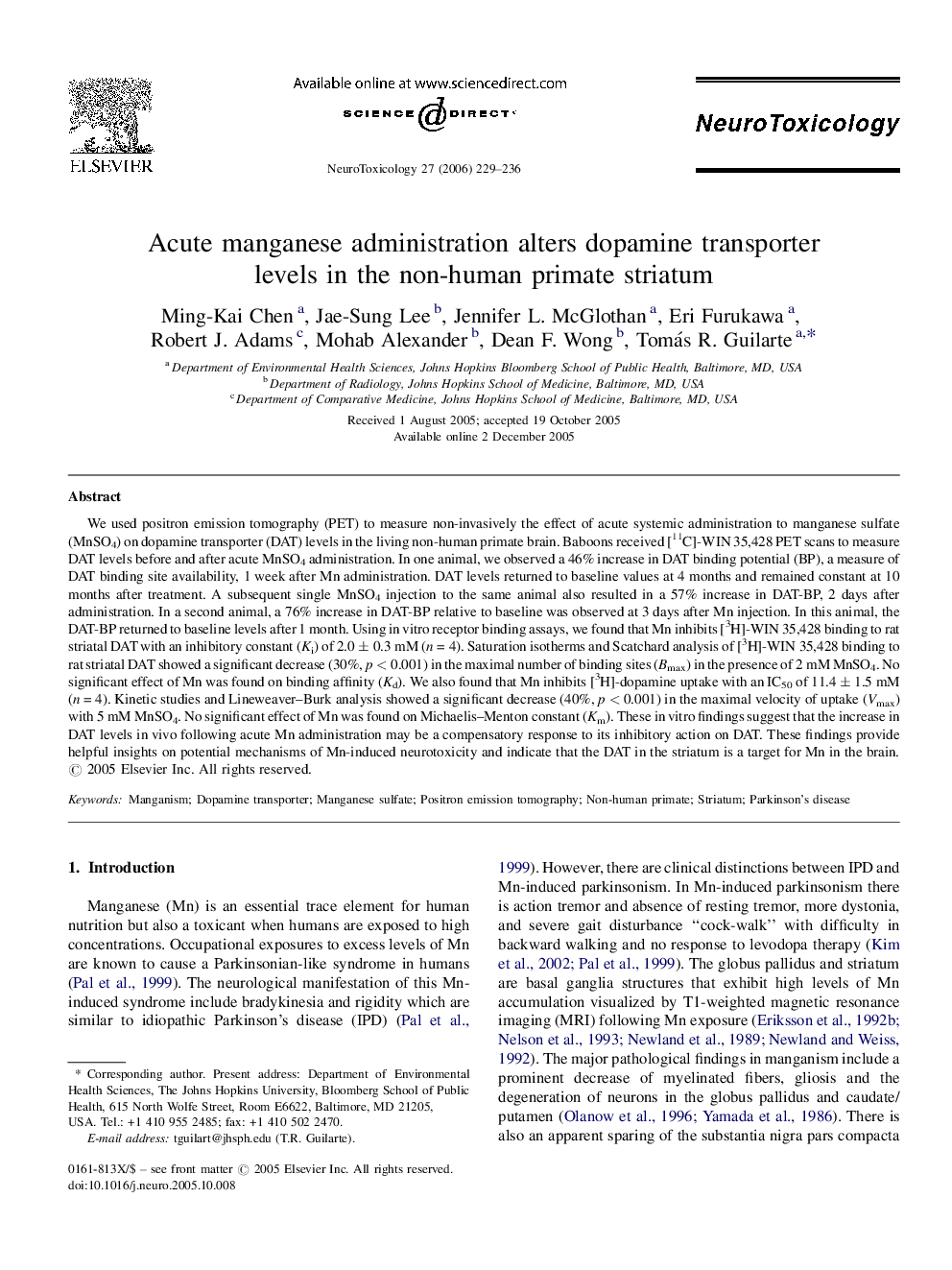| Article ID | Journal | Published Year | Pages | File Type |
|---|---|---|---|---|
| 2590269 | NeuroToxicology | 2006 | 8 Pages |
We used positron emission tomography (PET) to measure non-invasively the effect of acute systemic administration to manganese sulfate (MnSO4) on dopamine transporter (DAT) levels in the living non-human primate brain. Baboons received [11C]-WIN 35,428 PET scans to measure DAT levels before and after acute MnSO4 administration. In one animal, we observed a 46% increase in DAT binding potential (BP), a measure of DAT binding site availability, 1 week after Mn administration. DAT levels returned to baseline values at 4 months and remained constant at 10 months after treatment. A subsequent single MnSO4 injection to the same animal also resulted in a 57% increase in DAT-BP, 2 days after administration. In a second animal, a 76% increase in DAT-BP relative to baseline was observed at 3 days after Mn injection. In this animal, the DAT-BP returned to baseline levels after 1 month. Using in vitro receptor binding assays, we found that Mn inhibits [3H]-WIN 35,428 binding to rat striatal DAT with an inhibitory constant (Ki) of 2.0 ± 0.3 mM (n = 4). Saturation isotherms and Scatchard analysis of [3H]-WIN 35,428 binding to rat striatal DAT showed a significant decrease (30%, p < 0.001) in the maximal number of binding sites (Bmax) in the presence of 2 mM MnSO4. No significant effect of Mn was found on binding affinity (Kd). We also found that Mn inhibits [3H]-dopamine uptake with an IC50 of 11.4 ± 1.5 mM (n = 4). Kinetic studies and Lineweaver–Burk analysis showed a significant decrease (40%, p < 0.001) in the maximal velocity of uptake (Vmax) with 5 mM MnSO4. No significant effect of Mn was found on Michaelis–Menton constant (Km). These in vitro findings suggest that the increase in DAT levels in vivo following acute Mn administration may be a compensatory response to its inhibitory action on DAT. These findings provide helpful insights on potential mechanisms of Mn-induced neurotoxicity and indicate that the DAT in the striatum is a target for Mn in the brain.
